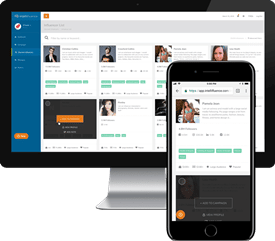Last Updated on June 8, 2020
Word-of-mouth marketing campaigns are the purest form of organic growth for any business or brand. You’d be surprised by how many major businesses got to where they are not solely through standard marketing but through encouraging customers to spread the word. Let’s take a look at several examples of massive word-of-mouth marketing success, each telling its own story about how to succeed.
Coca-Cola
Coca-Cola’s entire history is a fascinating study in marketing. The brand is especially focused on creating a sense of community and goodwill that naturally increases word-of-mouth. The Share a Coke campaign, which has taken place across 70 countries, is the easiest recent example.
By labeling bottles with different names, people felt inspired to buy them for a friend or family member with a matching name. This blended perfectly with the #ShareaCoke hashtag, inspiring people to go on social media to share pictures of Cokes with their names or the name of people they knew.
Starbucks
When’s the last time you saw a Starbucks commercial? When Starbucks first appeared as a small Seattle cafe chain, one of the main factors that set it apart was a lack of standard advertising. Starbucks has always emphasized word-of-mouth through strategies such as customer feedback, while also putting money into product placement in films and TV. This kept Starbucks in people’s minds, but in a subtle way, and soon it was known as a coffee shop that cared about its customers. This style of business has translated easily into the social media age.
The main reason Pinterest is such a successful social media platform is because of its reliance on user-generated and user-curated content. In the company’s early days, the business focused on its first 3,000 users and planned a collaborative word-of-mouth campaign. Because these initial 3,000 people were loyal and wanted to share Pinterest with others, they were more than willing to meet and discuss feedback ideas and speak directly with Pinterest employees. This created goodwill, and soon the user base happily participated in whatever the company proposed, such as inviting friends to create boards and recommend new users.
Pinterest is a great example of how word-of-mouth can start internally with your core customers. By showing how much you care, this can inspire them to reach out and draw in new customers for you.
Zappos
Shoe and clothing company Zappos had an unusual marketing strategy compared to its competition. Instead of spending a portion of its funds on regular advertising, the company channeled that money toward perfecting the buying and customer service processes. The goal was to leave no customer unsatisfied. While the company expected to lose money as a result of this strategy, its reputation ballooned. As a result, Zappos became a billion-dollar company over time. Similar to Starbucks, Zappos showed that excellent customer service and encouraging repeat business can be extremely powerful for word-of-mouth marketing.
3M ESPE
3M ESPE, a manufacturer of products for dentists’ offices capitalized on one of the most important parts of word-of-mouth marketing: reviews. Realizing that its clients would only buy products with good reviews, 3M ESPE simplified its review process, making it effortless for any dentist customer to leave a review on what he or she bought.
Soliciting feedback at conferences and through email newsletters, the company soon had a plethora of reviews for all of its products, written by ideal customers, which inspired confidence among all future buyers. 3M ESPE helped show that even if you aren’t Amazon, reviews matter.
Adidas
Influencer marketing is a subset of word-of-mouth marketing in which you rely on a popular and trusted person with a relevant audience to spread the word about your brand. A lot of influencer marketing today is done on social media with people who didn’t have a connection to the business at first. Adidas, however, is proof that you can create your own influencers if you get creative.
Sponsoring China’s women’s volleyball team in the 2008 Summer Olympics, Adidas made a team blog that helped people learn about all the members, elevating them into influencers. This, combined with a series of viral videos and a unique set of chants for fans to use, got more people invested in the team, which won the gold medal in 1980. Adidas’s campaign came back around to benefit the company through an increase in followers due to the popular blog.
If you’re looking to increase word-of-mouth exposure for your brand, the most important thing to consider is your own business’s circumstances and audience. As this list shows, every business is different and has its own opportunities and challenges to succeed. That said, if you want to create a winning word-of-mouth marketing strategy, you can’t go wrong with influencer marketing. Made more viable than ever through social media, influencer marketing can get your brand seen by your ideal customers. Try Intellifluence and take all the complexity and headache out of your new influencer marketing campaign.

SallyBot is committed to helping users get the most out of Intellifluence. By helping brands create campaigns, providing unparalleled customer service and offering useful advice, nothing makes SallyBot happier than hearing she is liked… Really, really liked.






